Severely limits seed surviviorship of slickspot peppergrass in a low-yield growing season
Nicol D. Plesner, Dr. Ian C. Robertson
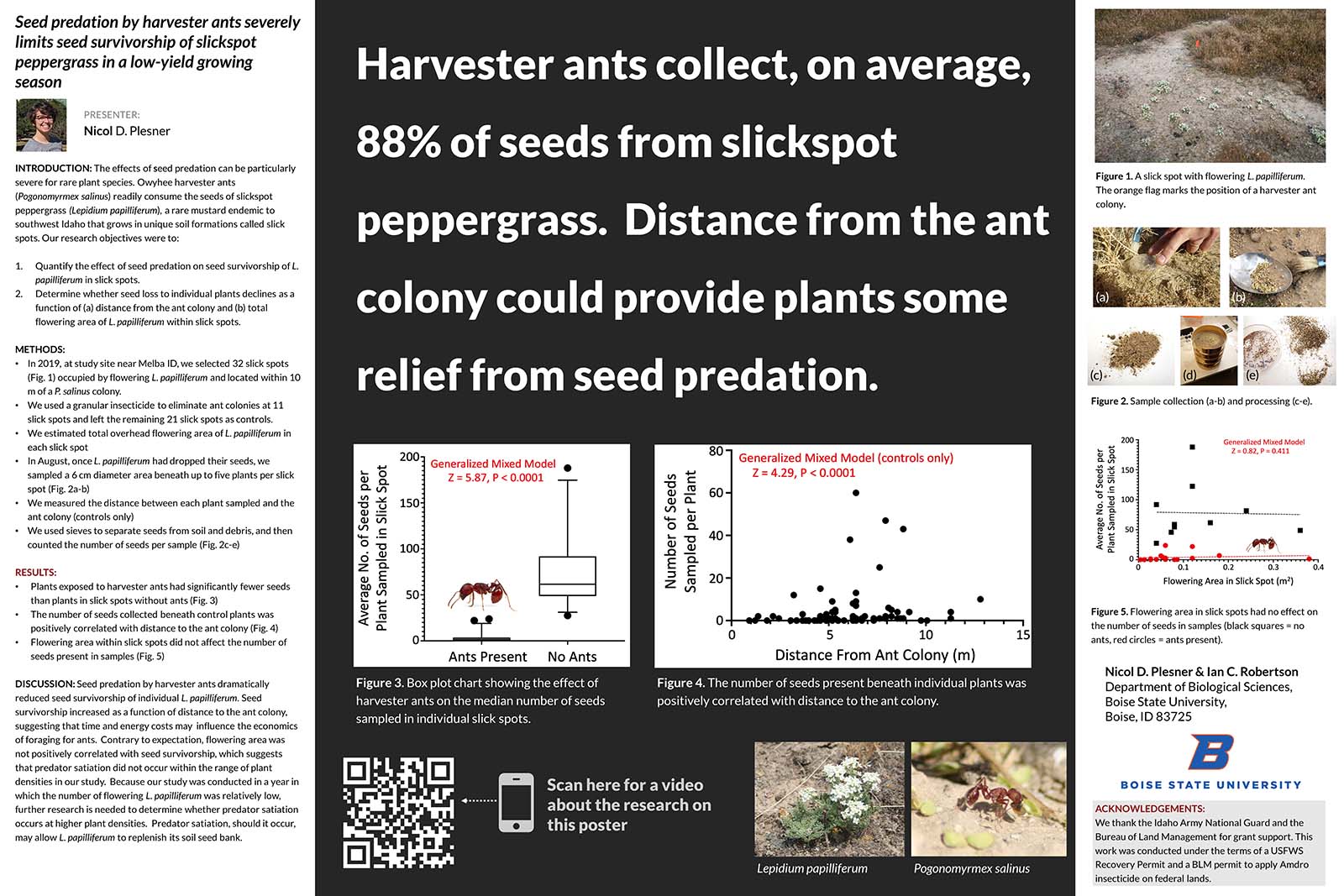
Introduction
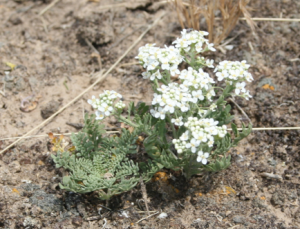
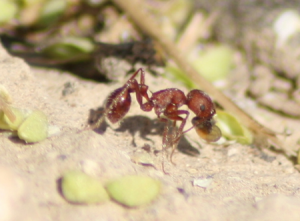
The effects of seed predation can be particularly severe for rare plant species. Owyhee harvester ants (Pogonomyrmex salinus) readily consume the seeds of slickspot peppergrass (Lepidium papilliferum), a rare mustard endemic to southwest Idaho that grows in unique soil formations called slick spots. Our research objectives were to:
- Quantify the effect of seed predation on seed survivorship of L. papilliferum in slick spots.
- Determine whether seed loss to individual plants declines as a function of (a) distance from the ant colony and (b) total flowering area of L. papilliferum within slick spots.
Methods
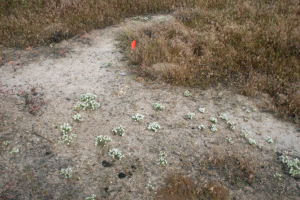
- In 2019, at study site near Melba ID, we selected 32 slick spots (Fig. 1) occupied by flowering L. papilliferum and located within 10 m of a P. salinus colony.
- We used a granular insecticide to eliminate ant colonies at 11 slick spots and left the remaining 21 slick spots as controls.
- We estimated total overhead flowering area of L. papilliferum in each slick spot
- In August, once L. papilliferum had dropped their seeds, we sampled a 6 cm diameter area beneath up to five plants per slick spot (Fig. 2a-b)
- We measured the distance between each plant sampled and the ant colony (controls only)
- We used sieves to separate seeds from soil and debris, and then counted the number of seeds per sample (Fig. 2c-e)
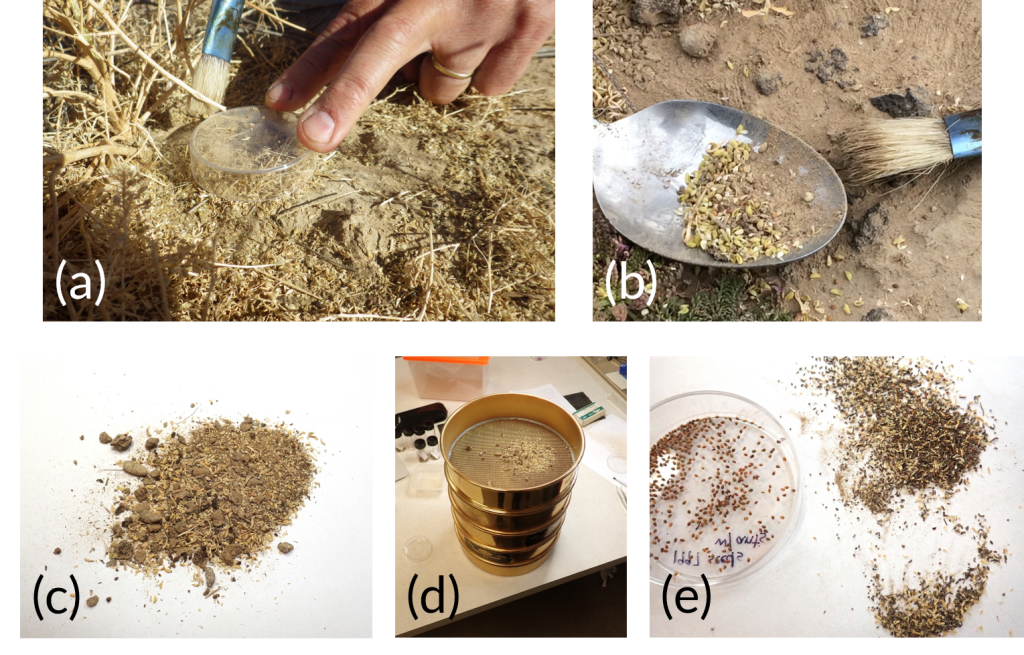
Harvester ants collect, on average, 88% of seeds from slickspot peppergrass. Distance from the ant colony could provide plants some relief from seed predation.
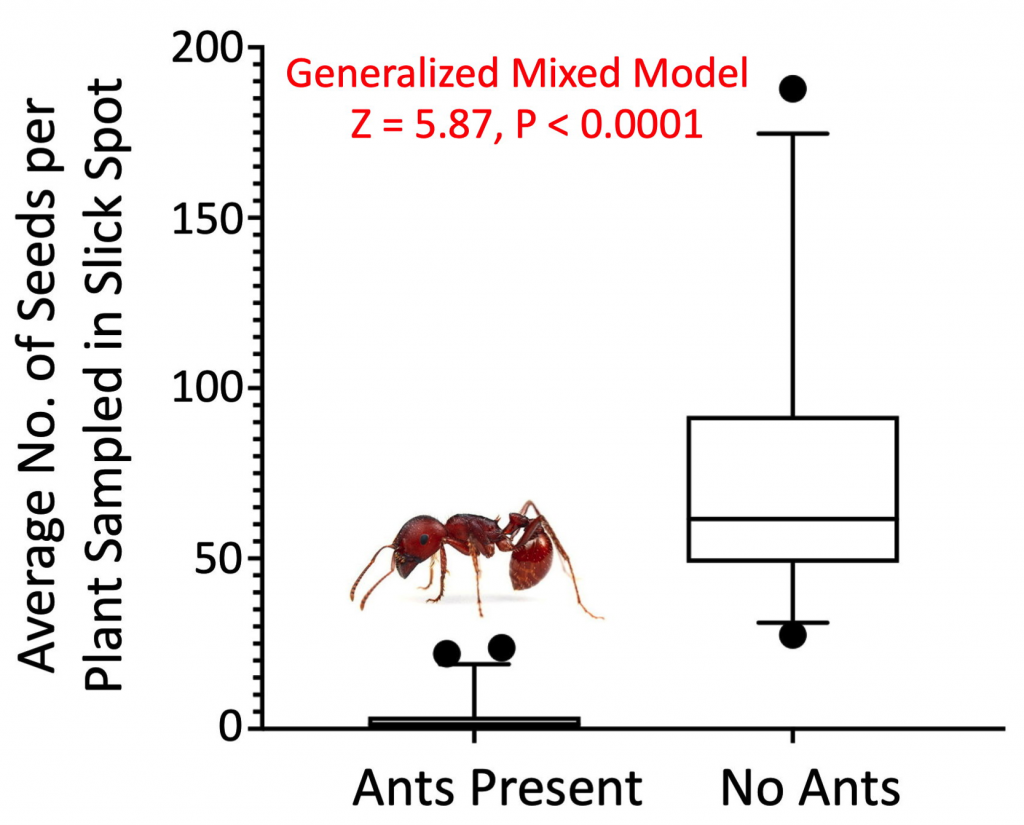
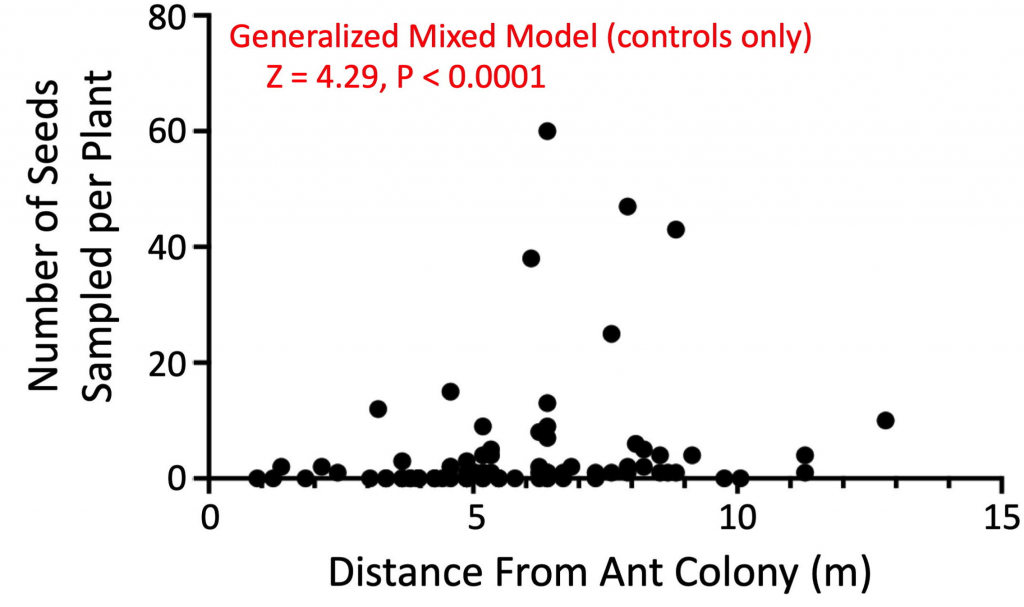
Results
- Plants exposed to harvester ants had significantly fewer seeds than plants in slick spots without ants (Fig. 3)
- The number of seeds collected beneath control plants was positively correlated with distance to the ant colony (Fig. 4)
- Flowering area within slick spots did not affect the number of seeds present in samples (Fig. 5)
Discussion
Seed predation by harvester ants dramatically reduced seed survivorship of individual L. papilliferum. Seed survivorship increased as a function of distance to the ant colony, suggesting that time and energy costs may influence the economics of foraging for ants. Contrary to expectation, flowering area was not positively correlated with seed survivorship, which suggests that predator satiation did not occur within the range of plant densities in our study. Because our study was conducted in a year in which the number of flowering L. papilliferum was relatively low, further research is needed to determine whether predator satiation occurs at higher plant densities. Predator satiation, should it occur, may allow L. papilliferum to replenish its soil seed bank.
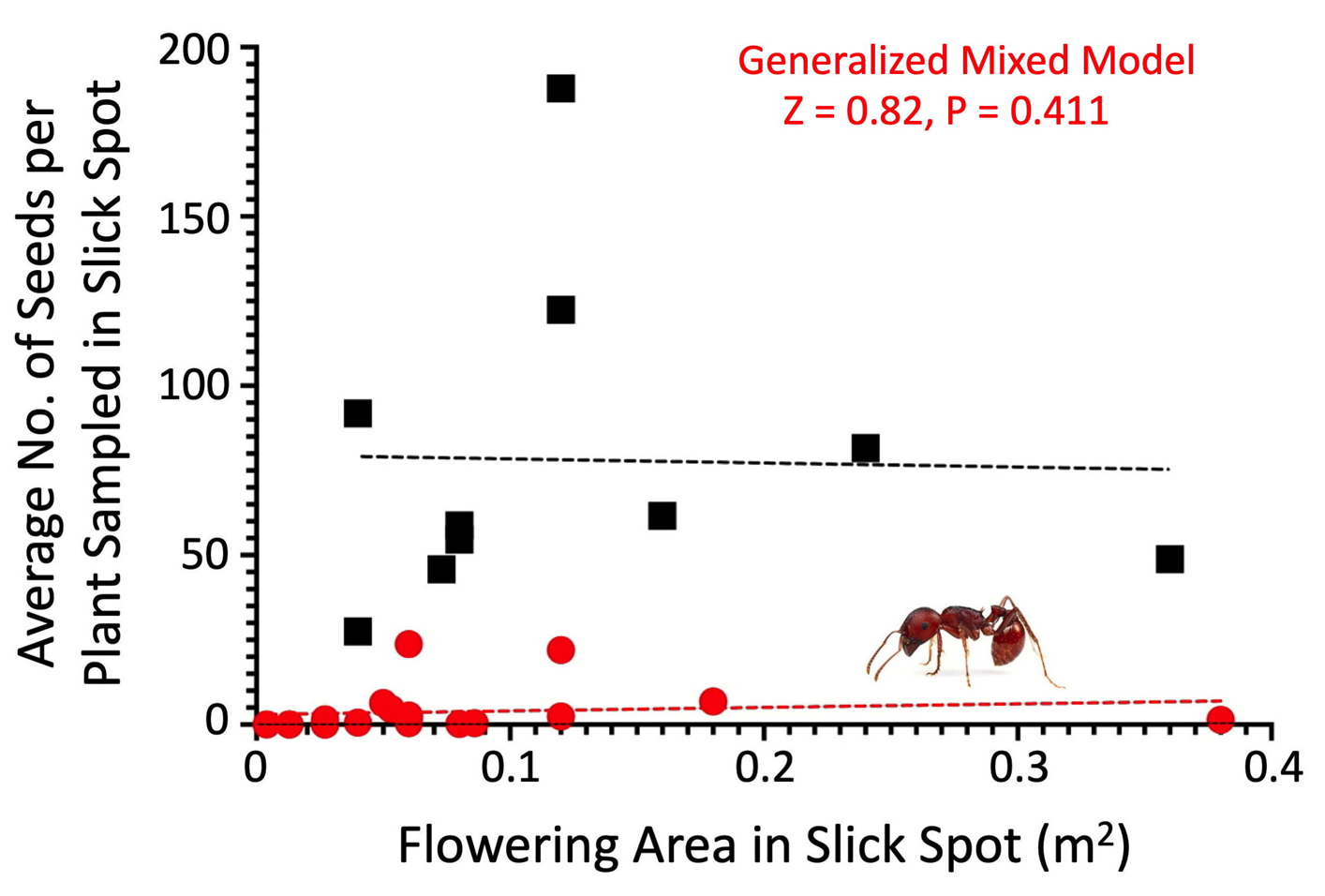
Acknowledgements
We thank the Idaho Army National Guard and the Bureau of Land Management for grant support. This work was conducted under the terms of a USFWS Recovery Permit and a BLM permit to apply Amdro insecticide on federal lands.
Additional Information
For questions or comments about this research, contact Nicol Plesner at nicolplesner@u.boisestate.edu.